List of 365 Days Flowering Plants in India – [All Season Flowers]
Save Earth Life2024-06-26T00:45:41+05:30In this blog, we will be providing you with a list of 365 days flowering plants in India that can grow for all Season days.
Lady Bird Johnson once said, “where flowers bloom so does hope” and it can’t get any truer than that.
She used this quote often highlighting a flower’s ability to thrive even in the most challenging conditions just as hope. Flowering plants offer beauty to any house or workplace. They enrich our lives with color, aroma, and beauty. The trick is to successfully grow them. Purchasing a 365 days flowering plants in India is something you should do if you want to bring hope to your life.
For flowering plants to flourish, certain conditions must exist. There is enough light, water, nutrients, and airflow in the environment. Additionally, seedlings require heat, humidity, and darkness. Flowering plants need minimal care and can flourish in nearly any setting. They are not only gorgeous, but they also provide significant health advantages.
Table of Contents
ToggleIntroduction about 365 Days Flowering Plants
All living things, including the earth, benefit greatly from plants. Plants use their leaves to absorb carbon dioxide and give oxygen, both of which are necessary for breathing in humans and other creatures. Additionally, plants help to purify water. In contrast to their aesthetic value, flowering plants bring positivity to you.
There is a wide range of alternatives for growing these flowering plants. These all season flowering plants in india produce tasty fruits and berries as well as flowers with bright colors that draw bees and butterflies. Consider it a bonus if you can grow flowering plants that bloom 365 days a year. They are vibrant, climatically adaptable, and produce a rainbow of blossom hues, making your landscape aesthetically pleasing!
365 Days Flowering Plants in India With Names
There are several plants that can grow throughout the year. The plants require different types of nourishment and they can flourish all year long. Some flowers all season flowering plants in India with names are –
- Sunflower
- Marigold
- Spider Lily
- Bougainvillea
- Hibiscus
- Adenium
- Portulaca – 9 o’clock Flower
- Sadabahar/Vinca
- Gaillardia
- Zinnia
- Globe Amarnath (Gomphrena)
- Ixora (Rukmini)
- Christ Plant (Euphorbia Milii)
- Morning Glory
- Balsam
- Cosmos
- Snowdrops
- Hydrangea
Now, let us discuss these all season flowering plants of India in detail. We will provide you with a detailed description of all the flowering plants with their climate requirements, sowing time and the method of growing that you can use to grow these beautiful flowers in your garden.
Best All-Year Flowering Plants in India
- 1. Sunflower - 365 Days Flowering Plants in India
![List of 365 Days Flowering Plants in India - [All Season Flowers] 365 days flowering plants in india with pictures](https://saveearthlife.com/wp-content/uploads/2022/10/Sunflower_1-1140x595.webp)
Hindi name of Sunflower – सूर्यमुखी या सूरजमुखी (Surajmukhi)
The characteristic enormous flower heads and brilliant color of sunflowers are well known. Around the world, they are grown as all-season flowering plants in India as agricultural and decorative crops.
Large flower heads with a black center composed of many florets are characteristic of sunflowers. The flower petals’ color varies depending on the cultivating kinds, but they are often bright yellow.
- Method of growing: direct sowing (outdoors)
- Sowing time: March to mid-May
- Climate Requirements: grows best in the bright sun of hot summers
- Other Specific Requirements: grows well in sandy and loamy soil, requires 6 to 8 hours of sunlight, requires adequate water during sowing, and add organic compost to the soil for germination.
- 2. Marigold - 365 Days Flowering Plants in India
![List of 365 Days Flowering Plants in India - [All Season Flowers] 365 days flowering plants in india with pictures](https://saveearthlife.com/wp-content/uploads/2022/10/Marigold-1140x595.webp)
Hindi Name of Marigold – गेंदा
Everyone loves marigolds because of their vivid colors and numerous layers of overlapping petals. Flowers come in a variety of hues, such as vivid yellow, orange, red, and maroon. Since they can tolerate dry, hot summers, marigolds are a better choice to cultivate as summer flowers.
- Method of sowing: direct sowing (outdoors)
- Sowing time: February to March, September to October
- Climate requirements: grows well in full sun and hot weather of the summer
- Other Specific Requirements: grows well in alluvial soil, requires 7-8 hours of sunlight, waters the soil regularly, and adds some fertilizers at the time of sowing.
- 3. Spider Lily - 365 Days Flowering Plants in India
![List of 365 Days Flowering Plants in India - [All Season Flowers] 365 days flowering plants in india with pictures](https://saveearthlife.com/wp-content/uploads/2022/10/Spider-Lily-1140x595.webp)
Spider lily is one of the most important all-season flowering plants in India. The petals of these flowers are thin and delicate with long stamens in between which appear like a spider.
- Hindi Name of Spider Lily – स्पाइडर लिली, नग्न लिली, तूफान लिली
- Method of sowing: direct sowing (outdoors and indoors)
- Sowing time: February to March (early summers)
- Climate requirements: grows well in full sun and hot weather of the summer
- Other Specific Requirements: grows well in slightly alkaline soil, requires 4-5 hours of sunlight, moderate water requirements, and requires high nitrogenous fertilizers.
- 4. Bougainvillea
![List of 365 Days Flowering Plants in India - [All Season Flowers] all season flowering plants in india with photos](https://saveearthlife.com/wp-content/uploads/2022/10/Bougainvillea-1140x595.webp)
Bougainvillea is a sprawling climber and shrub with thorns often found in sub-tropical regions that can grow within 12 months flowering plants in india. It is known for its green foliage and vibrant colors such as pink, purple, orange, and magenta.
- Hindi Name of Bouganvellia – कागज़ का फूल, बूगनबेल
- Method of sowing: direct sowing (outdoors)
- Sowing time: March to mid-May (early summers)
- Climate requirements: grows well in full sun
- Other Specific Requirements: grows well in slightly acidic soil, requires 7-8 hours of sunlight, evenly moisture requirement, and grows well in nitrogenous fertilizers.
- 5. Hibiscus - A 365 Day Flowering Plants in India
![List of 365 Days Flowering Plants in India - [All Season Flowers] all season flowering plants in india with photos](https://saveearthlife.com/wp-content/uploads/2022/10/Hibiscus-1140x595.webp)
Hibiscus is an annual or perennial plant with a trumpet-shaped flower that comes in various colors such as red, pink, yellow, and orange. Hibiscus flowers are attractive and bright that attract insects.
- Hindi Name of Hibiscus – गुड़हल, जवाकुसुम, अड़हुल
- Method of sowing: direct sowing (outdoors)
- Sowing time: February to March (early summers)
- Climate requirements: grows well in full sun or partial sun
- Other Specific Requirements: grows well in fertile, moist, loamy soil, requires 4-5 hours of sunlight, evenly moisture requirement, and grows well in organic fertilizers.
- 6. Adenium (Desert Rose)
![List of 365 Days Flowering Plants in India - [All Season Flowers] all season flowering plants in india with photos](https://saveearthlife.com/wp-content/uploads/2022/10/Adenium-1140x595.webp)
Both their delicate blossoms and their bulbous stems make adeniums or desert roses famous which have flowers that bloom all year around in India. The full light is ideal for this tiny tree-like plant, and like many desert plants, it only needs water when the ground is absolutely dry.
- Hindi Name of Adenium – रेगिस्तान का गुलाब
Method of sowing: direct sowing (outdoors & indoors)
- Sowing time: February to March (early summers)
- Climate requirements: grows well in full sun or partial sun
- Other Specific Requirements: grows well in sandy soil, requires 6-7 hours of sunlight, evenly moisture requirement, and requires fewer fertilizers.
- 7. Portulaca – 9 o’clock Flower
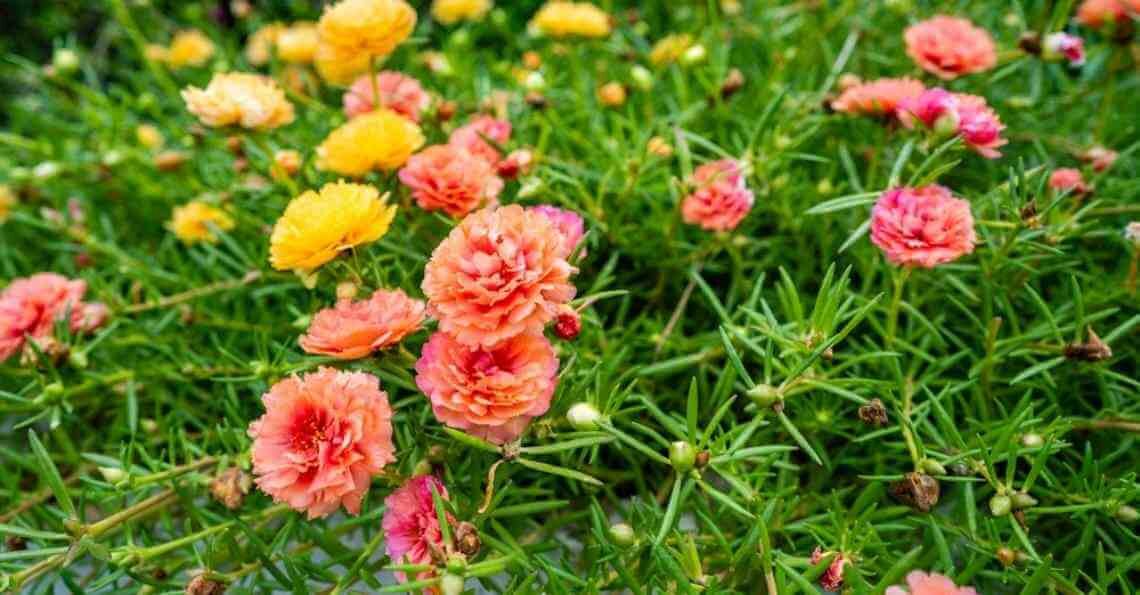
Plant portulaca, also known as moss rose grows in a location where it will get daily sun exposure. The blossoms of the plant close up when it is in the shade. The color of the flower is orange, white, yellow, red, etc.
- Hindi Name of Portulaca – नोनिया, मॉस रोज
- Method of sowing: direct sowing (outdoors)
- Sowing time: March to April (early summers)
- Climate requirements: grows well in full sun or partial sun
- Other Specific Requirements: grows well in sandy soil, requires 6-7 hours of sunlight, evenly moisture requirement but can tolerate less water too, and requires organic fertilizers to grow.
- 8. Sadabahar/Vinca
![List of 365 Days Flowering Plants in India - [All Season Flowers] annual flowering plants in india](https://saveearthlife.com/wp-content/uploads/2022/10/Sadabahar-1140x595.webp)
Its name, “Sadabahar,” means “evergreen” in English. This plant will keep your yard in bloom all year long. Its dark green foliage contrast with its abundance of pink and white blooms which looks attractive.
- Hindi Name of Vinca – सदाबहार
- Method of sowing: transplanting (outdoors)
- Sowing time: February to May (early summers)
- Climate requirements: grows well in full sun or shady area
- Other Specific Requirements: grows well in fertile & porous soil, requires 6-8 hours of sunlight, regular moisture requirement, and requires extra fertilizers.
- 9. Gaillardia - All Season Flowers in India
![List of 365 Days Flowering Plants in India - [All Season Flowers] annual flowering plants in india](https://saveearthlife.com/wp-content/uploads/2022/10/Gaillardia-1140x595.webp)
The name “blanket flowers” comes from how gaillardia plants cover an area with their growth and spread. Richly hued gaillardias are daisy-like flowers that prefer warm temperatures to blossom.
- Hindi Name of Gaillardia – गेलार्डिया
- Method of sowing: direct sowing (outdoors)
- Sowing time: March to April (early summers)
- Climate requirements: grows well in full sun & warm weather of summer
- Other Specific Requirements: avoid growing them in heavy clay soil, requires 5-7 hours of sunlight, evenly moisture requirement, and require mixed organic compost to grow.
- 10. Zinnia - A 12 Months Flowering Plants in India
![List of 365 Days Flowering Plants in India - [All Season Flowers] annual flowering plants in india](https://saveearthlife.com/wp-content/uploads/2022/10/Zinnia_1-1140x595.webp)
The name “blanket flowers” comes from how gaillardia plants cover an area with their growth and spread. Richly hued gaillardias are daisy-like flowers that prefer warm temperatures to blossom.
- Hindi Name of Zinnia – जिन का फूल, जिन्निया
- Method of sowing: direct sowing (outdoors) or transplanting
- Sowing time: Mid February to Mid April (early summers)
- Climate requirements: grows well in warm weather
- Other Specific Requirements: alluvial soil, requires 7-8 hours of sunlight, evenly moisture requirement but not waterlogged, and requires mix organic compost to grow during germination.
- 11. Globe Amarnath (Gomphrena)
![List of 365 Days Flowering Plants in India - [All Season Flowers] annual flowering plants in india](https://saveearthlife.com/wp-content/uploads/2022/10/Globe-Amarnath-1140x595.webp)
They are commonly cultivated for their eye-catching round dried or fresh flowers used in bouquets. The focal point of your garden may be the lovely and graceful round blossoms in vivid pastel shades of purple, orange, red, and true white.
- Hindi Name of Gomphrena – गुलमखमल, अमरनाथ
- Method of sowing: direct sowing (outdoors)
- Sowing time: February to May & mid-May-June
- Climate requirements: grows well in warm weather conditions
- Other Specific Requirements: grows well in nutrient soil, requires 7-8 hours of sunlight, regular moisture requirement, and requires extra fertilizers.
- 12. Ixora (Rukmini)
![List of 365 Days Flowering Plants in India - [All Season Flowers] all time flowering plants in india](https://saveearthlife.com/wp-content/uploads/2022/10/Ixora-Rukmini-1140x595.webp)
Ixora comes in a variety of hues, including as red, yellow, and bright orange, and spreads easily. Its Indian name, Rukmini, was derived from the name of a Hindu God. Ixora shrubs can be recognized by their broad corymbs of vibrant flowers.
- Hindi Name of Ixora – रुक्मिणी, रुग्मिनी, रंगन
- Method of sowing: direct sowing (outdoors) or grafting (indoors)
- Sowing time: February to May
- Climate requirements: grows well in warm weather conditions
- Other Specific Requirements: grows in well-drained soil, requires 4-5 hours of sunlight, regular moisture requirement, and fertilizes the plant monthly.
- 13. Christ Plant (Euphorbia Milii)
![List of 365 Days Flowering Plants in India - [All Season Flowers] all time flowering plants in india](https://saveearthlife.com/wp-content/uploads/2022/10/Christ-Plant-1024x534.webp)
This annual herbaceous shrub has dark green leaves and bluish-green flowers, and it is evergreen. It is a lovely perennial plant with flowers that can be planted all year.
- Hindi Name of Christ Plant – यूफोरबिया
- Method of sowing: direct sowing (outdoors)
- Sowing time: February – March and mid-May
- Climate requirements: grows well in warm weather conditions
- Other Specific Requirements: grows in well-drained soil, requires 4-5 hours of sunlight, dry to moderate moisture requirement.
- 14. Morning Glory - 365 Days Flowering Plants in India
![List of 365 Days Flowering Plants in India - [All Season Flowers] 12 months flowering plants in india](https://saveearthlife.com/wp-content/uploads/2022/10/Morning-Glory-1140x595.webp)
The common morning glory’s trumpet-shaped, vividly colored flowers have a faint scent and are a favorite of hummingbirds and butterflies. The buds get their distinctive moniker because they are tightly twisted up and open up as the sun touches them in the morning.
- Hindi Name of Morning Glory – मॉर्निंग ग्लोरी, कृष्णबीज
- Method of sowing: direct sowing (outdoors)
- Sowing time: February – March
- Climate requirements: grows well in warm weather conditions
- Other Specific Requirements: grows in well-drained soil, requires 7 – 8 hours of sunlight, grows well with regular watering, and low nitrogen fertilizers are required.
- 15. Balsam
![List of 365 Days Flowering Plants in India - [All Season Flowers] 12 months flowering plants in india](https://saveearthlife.com/wp-content/uploads/2022/10/Balsam-1140x595.webp)
Balsams are commonly planted due to their ease of cultivation and insect resistance that has 365 days of flowering in India. These lovely summer flowers are also referred to as rose balsams, impatiens, and balsams.
- Hindi Name of Balsam – गुलमेंहदी, बाल्सम
- Method of sowing: direct sowing (outdoors), transplanting
- Sowing time: February – March and May-July
- Climate requirements: grows well in warm and humid weather conditions
- Other Specific Requirements: grows in fertile & well-drained soil, requires 7 – 8 hours of sunlight, prefers moist soil.
- 16. Cosmos - A 12 Months Flowering Plants in India
![List of 365 Days Flowering Plants in India - [All Season Flowers] 12 months flowering plants in india](https://saveearthlife.com/wp-content/uploads/2022/10/Cosmos-1140x595.webp)
Cosmos have long, slender stalks and brilliant, daisy-like blossoms. Flowers from the cosmos come in a variety of colors and bloom all summer long. To draw pollinators and other helpful insects, it is preferable to grow these in summer.
- Hindi Name of Cosmos – कॉसमॉस
- Method of sowing: direct sowing (outdoors)
- Sowing time: March to July
- Climate requirements: grows well in sun
- Other Specific Requirements: grows in fertile & well-drained soil, requires 7 – 8 hours of sunlight, and regular watering is required.
- 17. Snowdrops (A Beautiful 365 Days Flowering Plants in India)
![List of 365 Days Flowering Plants in India - [All Season Flowers] 12 months flowering plants in india](https://saveearthlife.com/wp-content/uploads/2022/10/Snowdrops-1140x595.webp)
Snowdrops have linear leaves and bulbs. Even though they are dormant or asleep during the summer, snowdrops appreciate the summertime shade.
- Hindi Name of Snowdrop – गुलचाँदनी
- Method of sowing: direct sowing (outdoors)
- Sowing time: March to May
- Climate requirements: grows well in a cool environment
- Other Specific Requirements: grows in moist & drained soil, requires 5 to 6 hours of sunlight, regular watering required.
- 18. Hydrangea
![List of 365 Days Flowering Plants in India - [All Season Flowers] 12 months flowering plants in india](https://saveearthlife.com/wp-content/uploads/2022/10/Hydrangeas-1140x595.webp)
With flowers that come in a variety of colors, including white, numerous shades of blue and pink, maroon, crimson, and even pale green, the hydrangeas have long been a well-liked ornamental garden plant. It gives flowers for 12 months.
- Hindi Name of Hydrangea – सुकुसुम
- Method of sowing: direct sowing (outdoors)
- Sowing time: March to May
- Climate requirements: grows well in a cool environment
- Other Specific Requirements: grows in any type of soil, requires 6 to 7 hours of sunlight, regular watering required, and nitrogen-rich fertilizers are required.
Indoor vs outdoor flowering plants
While all flowers require adequate sunlight to bloom, some thrive especially well in brilliant indirect light, such as that found on windowsills and in the south or west-facing interior corners. These are termed ‘indoor flowering plants.’
Some indoor flowering plants include Jade plants, Snake plants, Spider plants, cast iron plants, and dumb cane are a few indoor plants with green foliage and low light requirements.
The flowering plants that require enough sunlight to grow and thrive are termed ‘outdoor flowering plants.’ Some of these plants include Monstera or the snake plant, Hibiscus, Gardenia, Jasmine, etc.
Steps to Grow Flowering Plants in India
Step 1: Choose a location for planting
Ensure that you have enough available area before beginning any gardening activity. Your all-season flowering plants will require space to spread out as well as a lot of direct light. Growing flowers is best done in a sunny location with a warm environment.
Recognize the different types of flowering plants’ light needs and arrange them appropriately. The majority of flowering plants need 6 to 8 hours of sunlight.
Step 2: Prepare the soil for the plantation
Before starting the plantation, clear they are from debris, weeds, and rubbish. This stage is crucial because if the soil is not adequately prepared, you could face numerous issues in the future. You can grow flowering plants only in healthy soil.
To allow for healthy root development, the soil surface should be loose and aerated. The soil should be mixed in the right amounts of manure and normal soil so that the rich, fertile soil has the necessary nutrients for the plant to grow successfully.
Step 3: Plant the seed, water, and feed
Sow the seed at the right depth for germination (generally, a few inched below the top layer of soil). And provide them with the right amount of water. In the starting, the flowering plant in India requires a lot of water but that differs from plant to plant.
Make sure to maintain damp but not wet soil. The seeds must germinate in moist soil. You can water them either in the early morning or late in the evening.
Step 4: Caring for your all-year flowering plants
The type of flowering plant you are cultivating will determine how to care for it. While flowering plants demand intense light and direct sunlight. Delicate flowering plants that require lots of sunlight will benefit from a location that receives direct sunlight.
Step 5: Pruning
When your flowering plants grow bigger in size, it’s time to prune them. Eliminate any dead branches and leaves. The flowering plant benefits from this as it continues to generate fresh, wholesome leaves & flowers.
Step 6: Fertilizing the flowering plants
Your flowering plants’ growth depends on fertilization. Use a fertilizer that is both organic and contains phosphorus and nitrogen. These nutrients help in the growth of flowering plants.
General Care Tips for Flowering Plants in India
- Comparatively speaking, all-year flowering plants in India need more sunlight than their counterparts. While there are flowering plants that like the sun or the shade, those that prefer the sun require longer or brighter light than those that shade loving plants.
- Since the plants require more sunlight, it follows that they also require more water. In particular, during the flowering season, there is a higher rate of photosynthesis and evaporation, which increases the frequency of watering.
- Always fertilize your flower with a well-balanced fertilizer for healthy blooming.
- Pinching is the practice of removing stem tips to promote lateral development of the plant. Your plants should be pinched back to encourage branching and the development of new flowers.
- Pest, fungus, bacteria, and viruses can affect the plant badly. By not using too much water in your garden, potted plants, or vases, you can prevent fungal illnesses. On the other hand, by using clean weeding and trimming instruments, you can avoid bacterial and viral illnesses.
Why choose a 365 Day Flowering plants?
Flowers from different areas are appreciated for their variety and unique qualities. India is renowned for its colorful flowers as well. Thousands of flowering plants in India grow especially due to its diverse climates and vast landmass. Some of India’s most beautiful and bright flowers can be found in Kashmir, Kanyakumari, Ladakh, and Sri Ganganagar.
In India, flowers are not just lovely; they also have religious and cultural importance. As a sign of their love and adoration for their gods, they utilize flowers to embellish various cultural and religious activities. In addition to sprint and summer, India has these lovely blooms all year long.
Conclusion
Flowering plants are simple to grow, but you must know how to take good care of them. The initial step is to select the best flowering plant for your requirements. The next step is to periodically water the soil and nourish the plants as soon as they begin to grow.
The all-year flowering plant will make your garden full of positivity and freshness. Plant these 365 day flowering plants in your garden and add color, fragrance, and beauty to your life and environment.
FAQ's - 365 Days Flowering Plants in India
There are many all-seasonal flowering plants in India that require less sunlight to grow. This includes peace lilies, lace leaves, orchids, mourning widows, snowdrops, etc.
According to research, there are in total of 18,500 flowering plants in India which accounts for an overall 6 percent of the world’s flowering plants.
There are simple steps for growing flowing plants in India:
- Choose a location for the plantation
- Prepare the soil for plantation
- Plant the seed, water them and feed them
- Pruning
- Fertilizing
- Care for the flowering plant
There are many flowers such as roses, jasmine, Raat Ki rani (Cestrum), sweat pea, Champa, and kedwa which smell and bloom all day long in India.
Top 10 flowering plants in India include:
Balsam, Cosmos, Gaillardia, Sunflower, Marigold, Gomphrena, Lantana, Zinnia, Hibiscus, Portulaca.
According to recent survey done by Botanical survey of India, Tamil Nadu accounts for the highest number of flowering plants in the country.

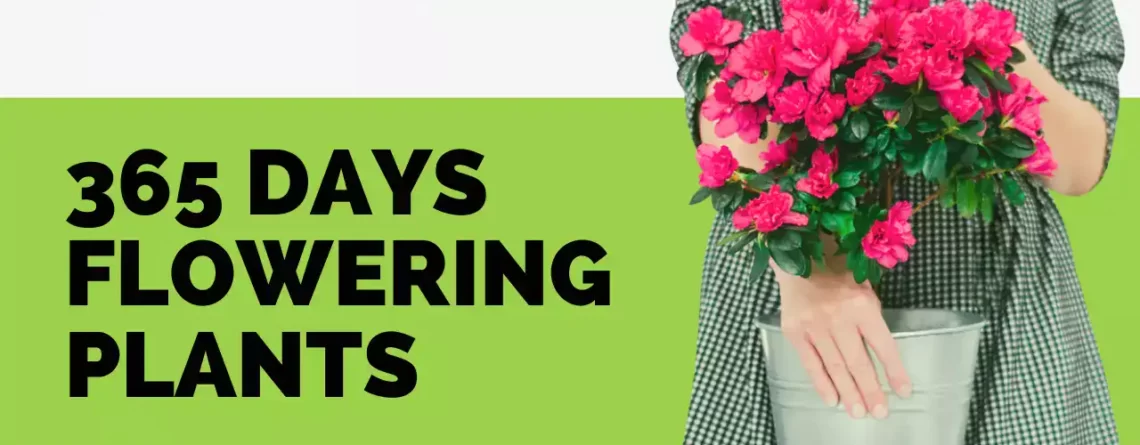
![List of 365 Days Flowering Plants in India - [All Season Flowers]](https://saveearthlife.com/wp-content/uploads/2023/05/amazon-in.png)
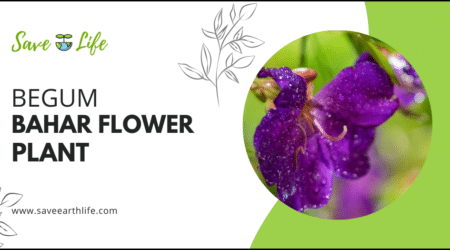
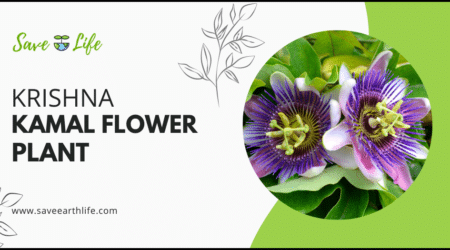

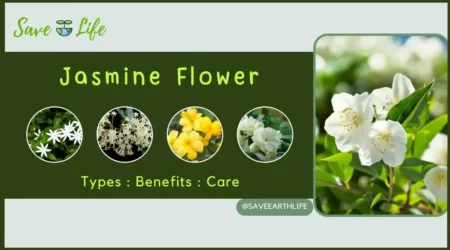
Comment (1)
Good write-up, I¦m regular visitor of one¦s website, maintain up the nice operate, and It’s going to be a regular visitor for a lengthy time.
Comments are closed.